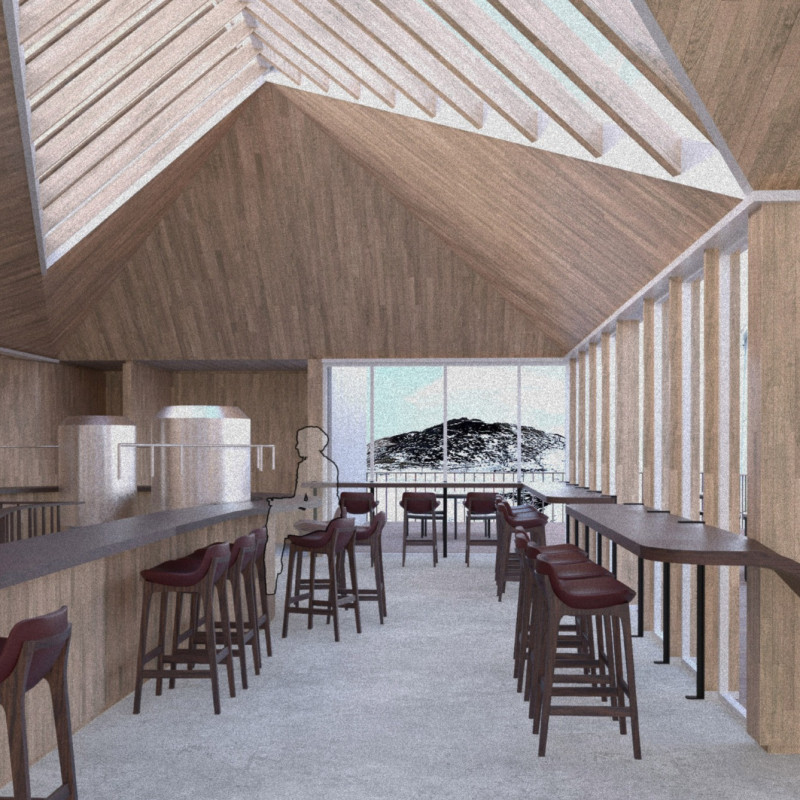5 key facts about this project
Functionally, the project serves as a mixed-use development, incorporating residential, commercial, and community spaces into a cohesive whole. This approach not only optimizes the use of limited space but also encourages social interaction and engagement among residents and visitors alike. Each component of the design has been meticulously planned to provide a variety of experiences, reflecting the diverse needs of its users. The residential areas feature a range of unit sizes, catering to different demographics, which enhances the inclusivity of the environment.
At its core, the architectural design emphasizes transparency and openness, utilizing large expanses of glass throughout the façade. This choice of material not only allows natural light to permeate the interior spaces but also creates a visual connection with the surrounding environment. The concept of biophilic design is evident in the incorporation of green spaces, such as rooftop gardens and vertical planters, which promote environmental sustainability while enhancing the overall well-being of the inhabitants. These elements integrate nature into the urban fabric, providing residents with a serene escape amidst the hustle and bustle of city life.
The materiality of the project is a defining characteristic that contributes to its unique appeal. A combination of locally sourced brick, wood, and concrete illustrates a commitment to sustainability and regionalism, grounding the design in its context. The warm tones of the brick harmonize with the natural fibers of the wood, creating a welcoming atmosphere that contrasts with the more industrial concrete elements. Such thoughtful material selection not only addresses the aesthetic values of the project but also ensures durability and low maintenance.
The design also incorporates innovative approaches to energy efficiency. Solar panels are strategically placed to harness renewable energy, while passive design strategies, such as cross-ventilation and thermal mass, reduce reliance on mechanical heating and cooling systems. This holistic approach to sustainability positions the project as a model for future developments, showcasing how architecture can responsibly address environmental impacts while delivering functional spaces.
Unique design features, such as communal gathering areas and flexible workspaces, further underline the project's commitment to fostering a sense of community. The integration of shared amenities encourages collaboration and social interaction among residents, enhancing the quality of life within the development. A welcoming entryway, combined with thoughtfully landscaped surroundings, creates an inviting approach that sets a positive tone for all who enter.
The architectural plans illustrate a careful consideration of flow and accessibility, with an emphasis on barrier-free design principles. Key areas such as staircases, elevators, and entry points are designed to accommodate a diverse range of users, ensuring that the space is welcoming to all. This attention to detail exemplifies the project's dedication to inclusivity, offering a model for future architectural endeavors.
In summary, this architectural project presents a comprehensive approach that skillfully balances functionality, aesthetic appeal, and sustainability. Through innovative design strategies and careful material choice, it stands as a valuable addition to the urban landscape. Readers are encouraged to explore the architectural plans, sections, and detailed designs to gain deeper insights into this project and appreciate the thoughtfulness that underpins its development. The commitment to community engagement and environmental sustainability makes this project a noteworthy example within the context of modern architectural practice.


























